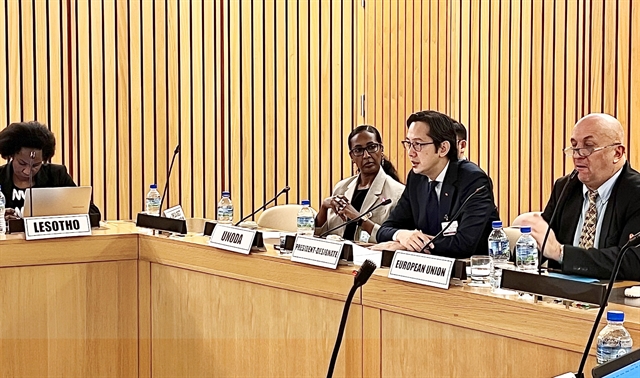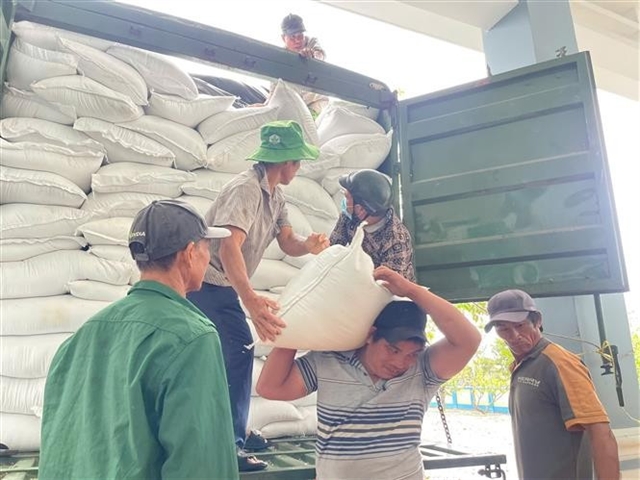 Sunday/Weekend
Sunday/Weekend
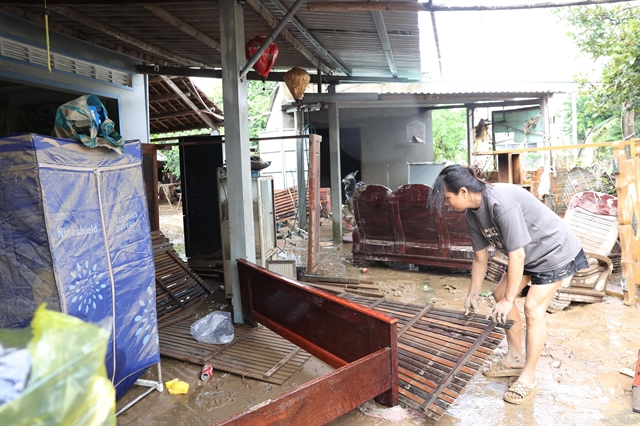
by Việt Dũng
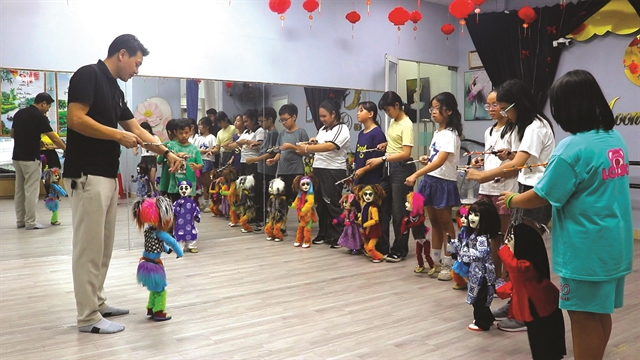 |
| Artist Trần Được runs a free string puppetry class for children every Sunday in HCM City’s Tân Tạo Ward. VNA/VNS Photo |
Every Sunday a small room in an apartment building in HCM City’s Tân Tạo Ward transforms itself into a lively stage where children learn to give life to strings and puppets.
When we arrived, the modest dance practice room was already buzzing with excitement. A group of small children eagerly chose their favourite puppets from a lineup. Some picked figures wearing traditional outfits, while others reached for puppets dressed in outlandish costumes.
Within minutes each child stood proudly beside their chosen companion, ready to perform.
Artist Trần Được, the founder of the class, along with his assistant, began by reviewing the basic techniques of controlling the marionettes. Then, as Vietnamese pop music filled the room, the children raised their puppets and began to dance.
For a newcomer to puppetry, it was an impressive sight. The young students made their puppets sway, bow, and twist their hips in time with the beat.
Every subtle flick of the wrist or lift of a finger brought the small figures to life.
Watching them, it was hard to believe that many had only been learning for a few months.
Strings, music and laughter
Đoàn Nguyễn Phượng Uyên, 16, joined the class two and a half months ago after discovering it in the same room where she attends dance lessons.
“It’s really fun. It relieves stress after a long week at school. When I finally manage to make the puppet move the way I want, it feels very satisfying,” she says.
Nine-year-old Trần Minh Quân feels the same way.
“At first it was hard to control the puppet, but teacher Được showed me how to do it properly. Now I can make it dance the way I want.”
During the class, the children practise using their fingers to tug the strings gently and combine movements into dance routines.
As they learn, Được and his assistant explain the traditional meanings behind the puppets’ costumes and gestures, turning every lesson into an engaging exploration of Vietnamese culture.
 |
| The puppets modelled after humans in traditional outfits help children explore Vietnamese culture. VNS Photo Việt Dũng |
Passing on a living art
Được is the deputy head of the Southern Dragon Water Puppet Troupe at the HCM City Arts Centre.
A postgraduate in arts, he has performed both water and string puppetry for more than 15 years. In October 2024, he launched the class, driven by a wish to pass the art of string puppetry to younger generations.
“Whenever we perform at schools, the children love it,” he says. “But there aren’t many spaces where they can actually learn it themselves. That’s why I decided to start this class.”
Determined to make the lessons accessible, he made them free of charge.
His initiative quickly attracted attention through word of mouth and parent recommendations, and more and more children joined, curious to try something new.
String puppetry, he explains, has deep roots in Việt Nam. In the past children used to make simple stringed puppets to play with during the Mid-Autumn Festival.
While the techniques used today are influenced by Western marionette traditions, he ensures that many of the characters in his class remain rooted in Vietnamese culture.
“Our string puppets are made from rubber, so they’re lightweight and durable – perfect for children.
“Traditional wooden puppets are heavier and harder to handle. Many of our puppets wear traditional Vietnamese outfits or colourful costumes that appeal to the kids.”
He works closely with a foreign manufacturer to ensure the puppets are suitable for his young students.
Each class begins at 5pm and lasts about an hour to an hour and a half, and involves technical training, cultural learning and plenty of laughter.
 |
| The Southern Dragon Water Puppet Troupe’s string-puppet shows delight both children and adults. Photo courtesy of Trần Được |
Revival of strings, stories
Formerly known as the HCM City Puppetry Troupe, the Southern Dragon Water Puppet Troupe has nearly 50 years of experience in both water and land puppetry.
In recent years, string puppetry has started to gain interest, especially since 2019, when it was introduced more widely in schools.
Today, the troupe performs both professional and community shows – many of them right inside classrooms.
Their performances – sometimes set to modern or pop music – have become a hit among students, who love it when they are invited to step on stage and try controlling the puppets themselves.
“String puppetry is easier for children to access than water puppetry,” Được says.
“Water puppetry requires a lot of practice and strength. But with string puppetry, children only need to understand the four main strings to start creating their own movements. After that they can express themselves freely.”
Elsewhere in Việt Nam, other groups are also taking string puppetry to young audiences. The Thăng Long Puppetry Theatre in Hà Nội, for example, performs both water and land puppetry at schools, set to lively, modern music.
Their shows often feature puppets modelled after popular musicians – something that appeals to both children and parents.
 |
| A 2024 televised show by the Hải Phòng Puppetry Troupe combines string and water puppets. Photo from YouTube |
Other troupes may stage more elaborate productions with performers operating their puppets from several metres above the stage and across colourful sets and backdrops.
By contrast, the Southern Dragon Water Puppet Troupe often keeps its shows intimate, with a few puppeteers performing directly in front of audiences.
Their performances include puppets inspired by lions in traditional lion dances – a creative touch that connects modern shows to Vietnamese cultural roots.
“String puppetry is very flexible,” Được says.“Children can perform anywhere – at family gatherings, school events or even on the street.
"They can dance their puppets to traditional folk songs or to modern pop music. Once they’re interested, they may become curious about other forms of traditional puppetry too.”
Experts say that puppetry offers much more than entertainment by engaging imagination, coordination and storytelling – qualities often overlooked in today’s hectic, screen-filled world.
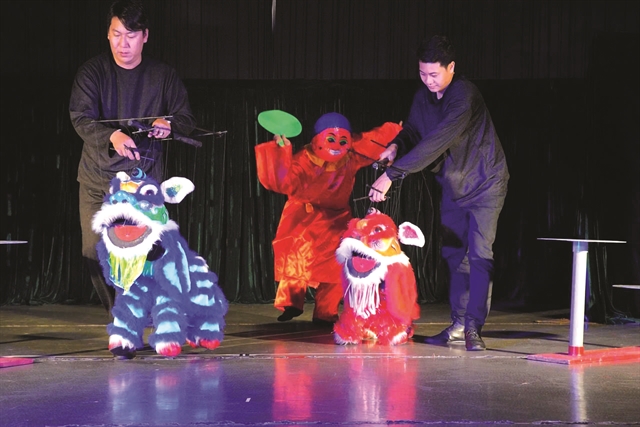 |
| A string-puppet show reenacting a Vietnamese lion dance – experts say puppetry is a fun way for children to learn history. Photo courtesy of Trần Được |
Keeping tradition alive
Nguyễn Phi Sơn, deputy director of the HCM City Arts Centre, says the art form has great educational potential.
“Puppetry isn’t just a pastime. It draws children into a world of fantasy and emotion. Because it’s so engaging, it has a lot of room to develop.”
The centre is now working to expand string puppetry by increasing performances at schools and investing in more puppets.
Though modern digital entertainment poses a stiff challenge, Sơn believes this investment is worth making.
“It’s important to build an audience base for the future. String puppetry workshops in schools can go a long way.”
He adds that exposing children to arts at an early age helps develop their creativity, thinking and spatial awareness – and gives them a joyful sense of discovery.
Puppetry, he says, can even make history lessons more engaging.
Looking ahead, Được hopes his string puppetry class can be integrated into primary school programmes or community centres across HCM City.
Meanwhile Sơn outlines plans to establish a dedicated puppetry theatre in the city, develop a professional training curriculum, and support local puppet makers in producing high-quality materials.
He also hopes the art will eventually be more recognised in Việt Nam – just as it is in countries with long-established puppetry traditions. VNS

